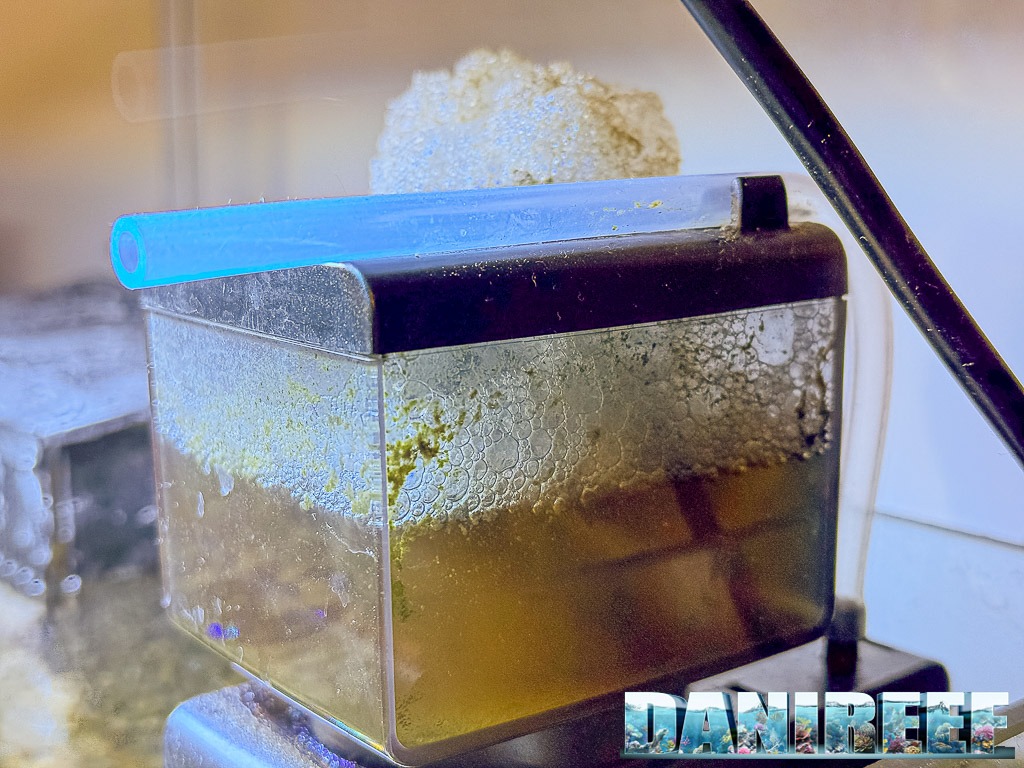
We’ve been testing the Sicce Shark Skimmer 150 for quite some time, and we’re absolutely impressed. Find out why in our review and video.
Sicce recently developed a pair of very similar skimmers, the Shark Skimmer 150 and the Shark Skimmer 300, which we previewed at this year’s Interzoo in an article you can revisit by clicking here: The Spectacular New Sicce Shark Skimmers at Interzoo 2024. Within a few months, we received both skimmers and decided to test the smaller 150 in our 80-liter aquarium with a few fish and corals. We thought it was the perfect test for this little beast.
The skimmer is quite compact and well-built, with a rectangular base and a collection cup that simply rests on the body. It’s simple, extremely quiet, and highly efficient. Let’s dive into the details.
Technical Specifications of the Sicce Shark Skimmer 150 and 300
Let’s start with the technical data to analyze these two new skimmers:
| Shark Skimmer 150 | Shark Skimmer 300 | |
| Skimming Type | Immediate with diffuser | Counter-current |
| Max Air Capacity | 150 l/h | 180 l/h (ozone compatible) |
| Power Consumption | 4 watt | 5 watt |
| Recommended Tank (Fish & Soft Corals) | 30 l | 50 l |
| Recommended Tank (SPS) | 40 l | 80 l |
| Recommended Tank (Mixed) | 150 l | 300 l |
| Glass Thickness | 15 mm | 15 mm |
| Dimensions | 66x120x243(h) cm | 83x125x243(h) cm |
| Price | 90 euro | 130 euro |
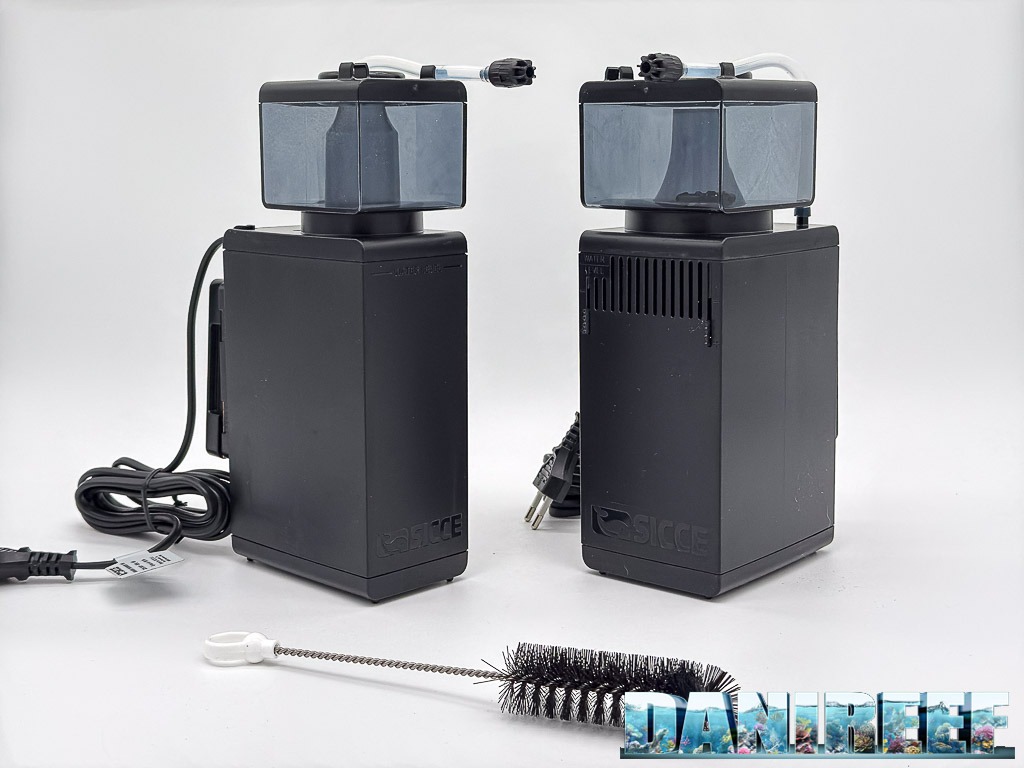
Our Video on the Sicce Shark Skimmers
To start, we recommend watching our video, where you’ll hear firsthand why we love this little skimmer so much. By the end of the video, you’ll understand why it’s become one of our favorites.
Build Quality
Despite its affordable price, the skimmer is very well-built, with a simple snap-on system that makes it easy to open and clean the pump. It comes with a single, strong magnet for mounting on the glass.
Here’s the snap-on mechanism for the Shark Skimmer 150 (the one we tested):
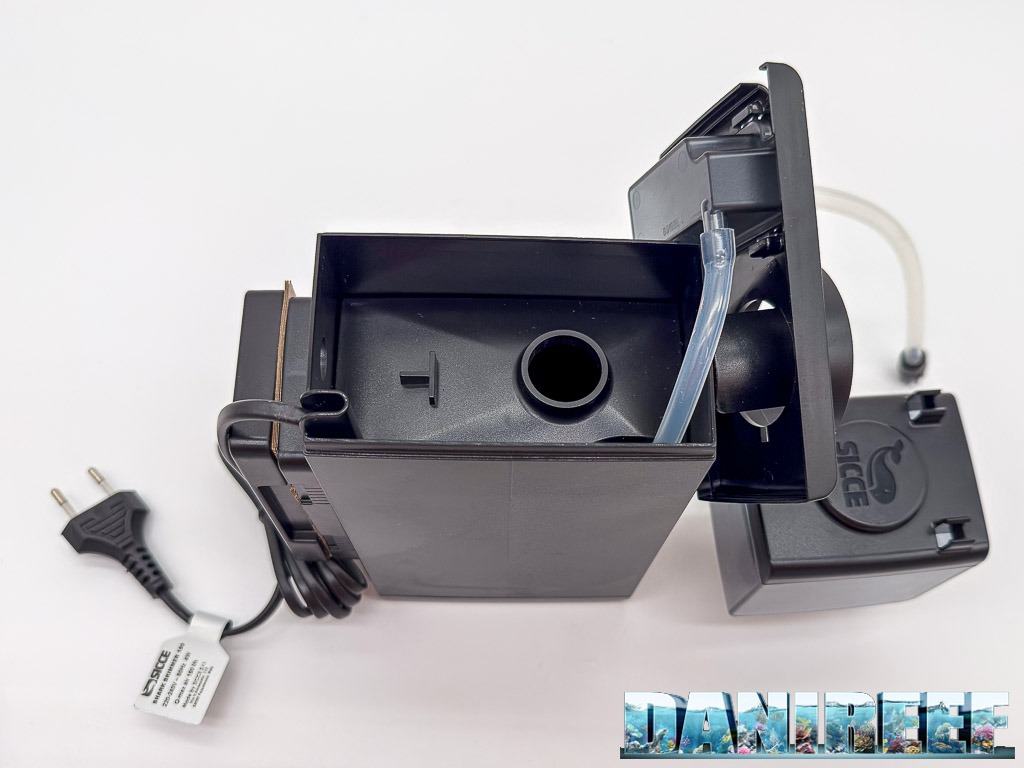
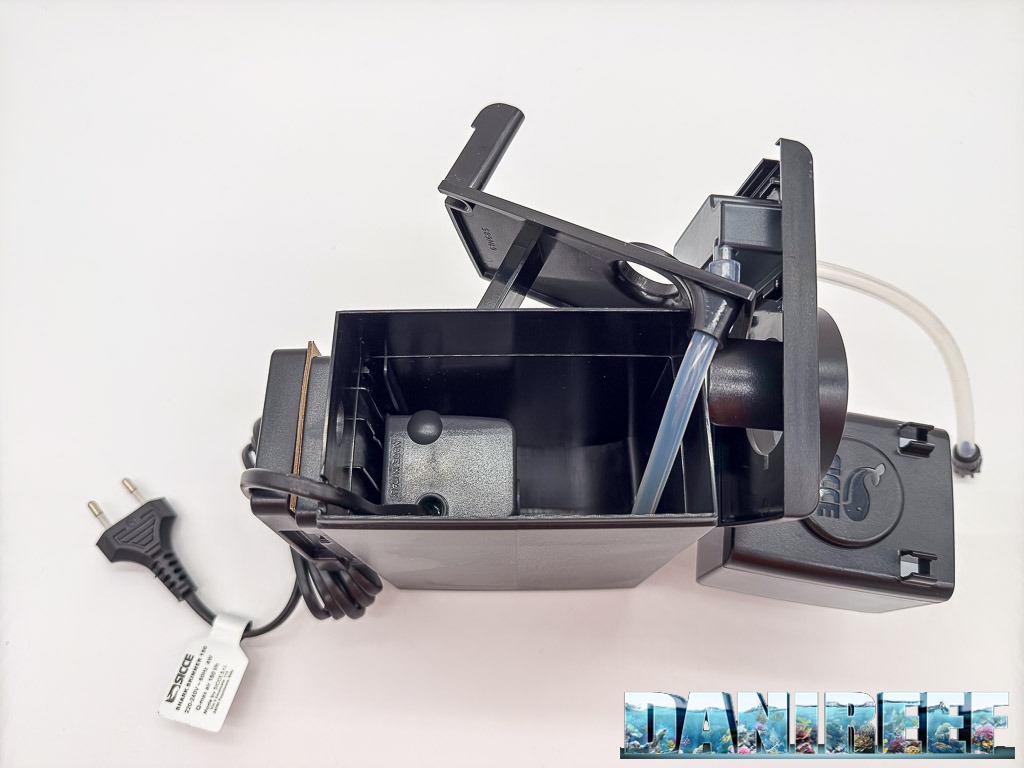
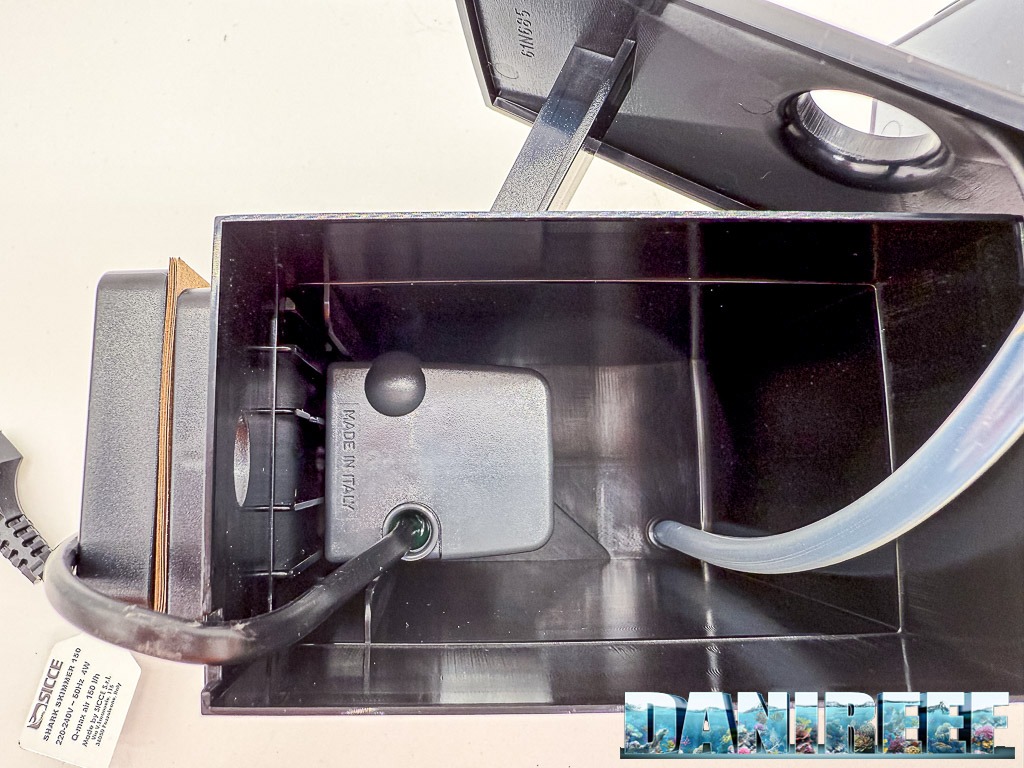
And here’s the mechanism for the Shark Skimmer 300:
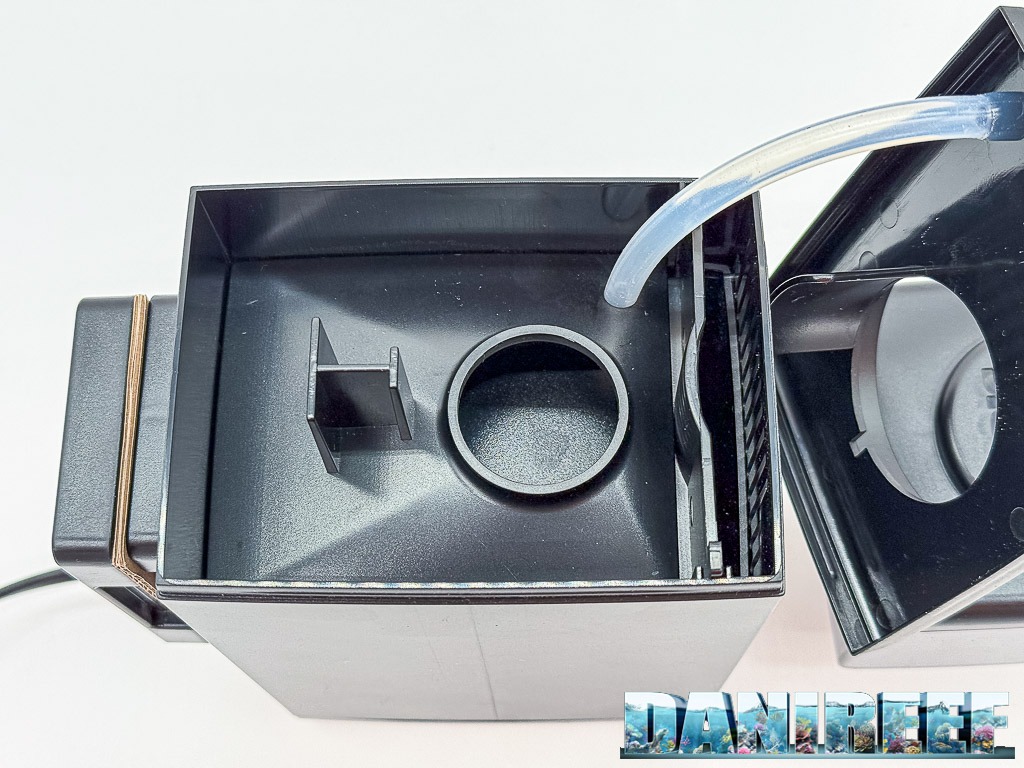
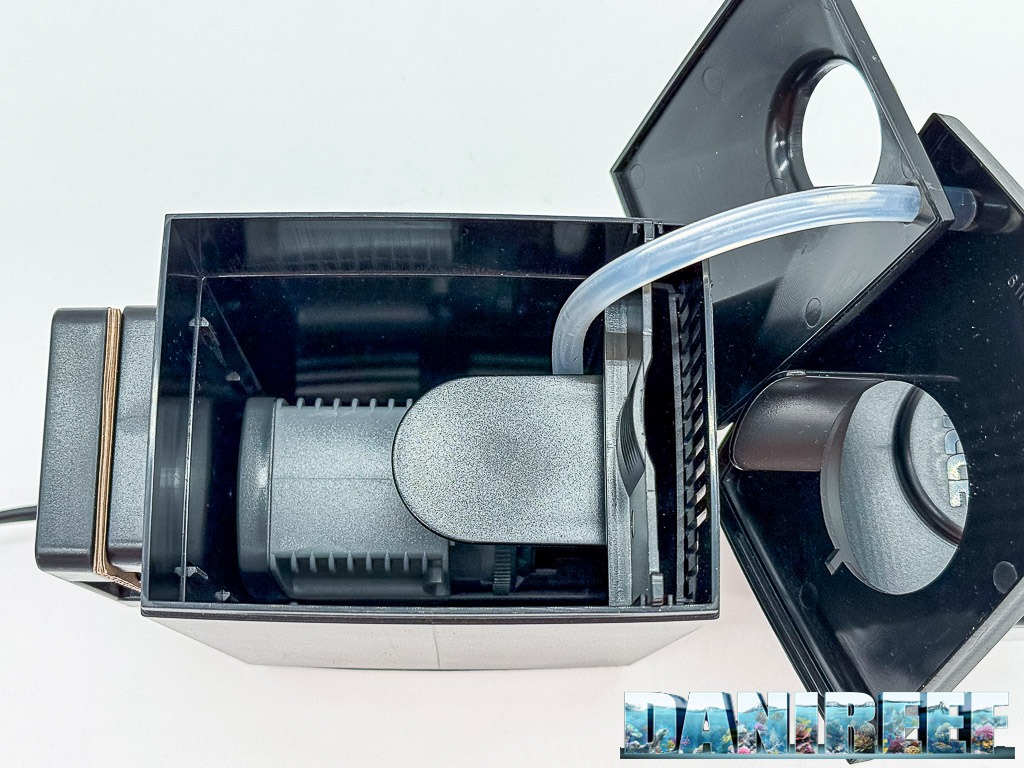
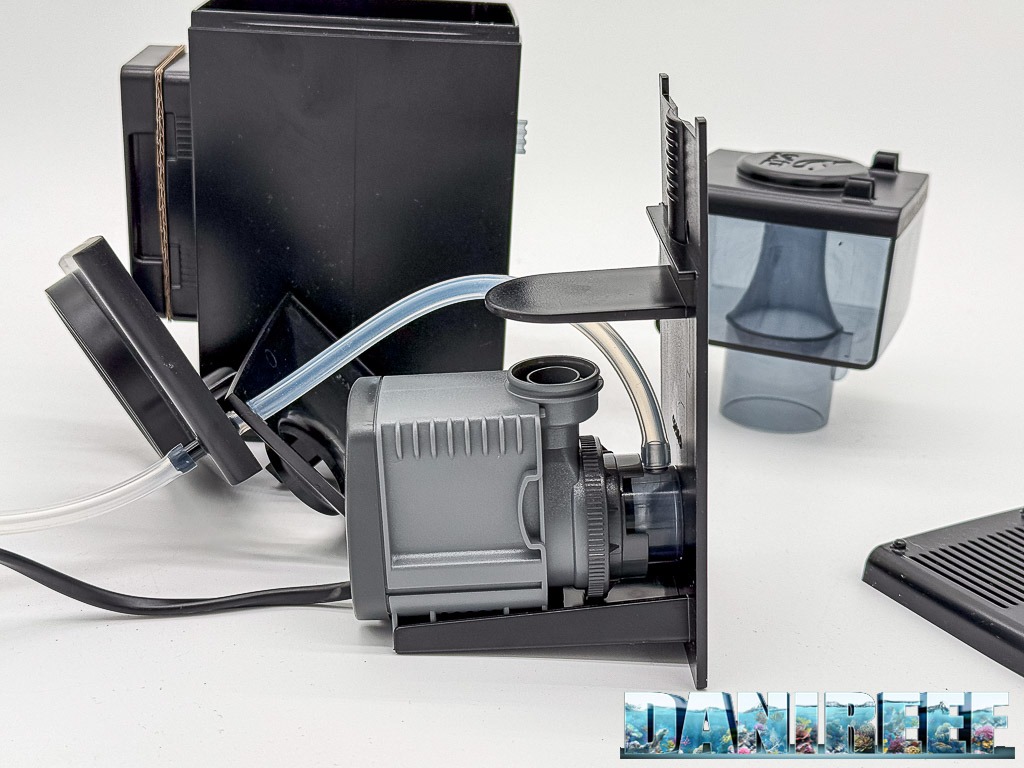
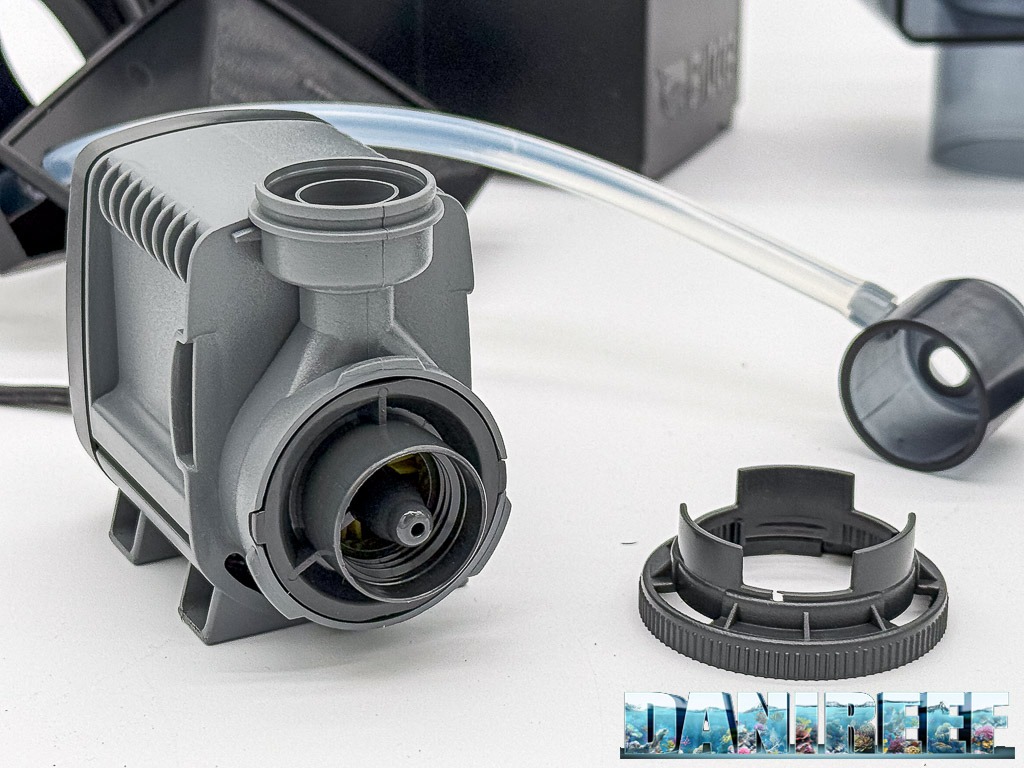


Slightly more complex, but only on paper. The pump slides out easily, and assembly/disassembly is straightforward, thanks to the clear guides on the parts. Both skimmers are single-pump systems, and the water level is adjusted by simply raising or lowering the skimmer. The 300 also has a minimal adjustment grid, which you can see in detail below.
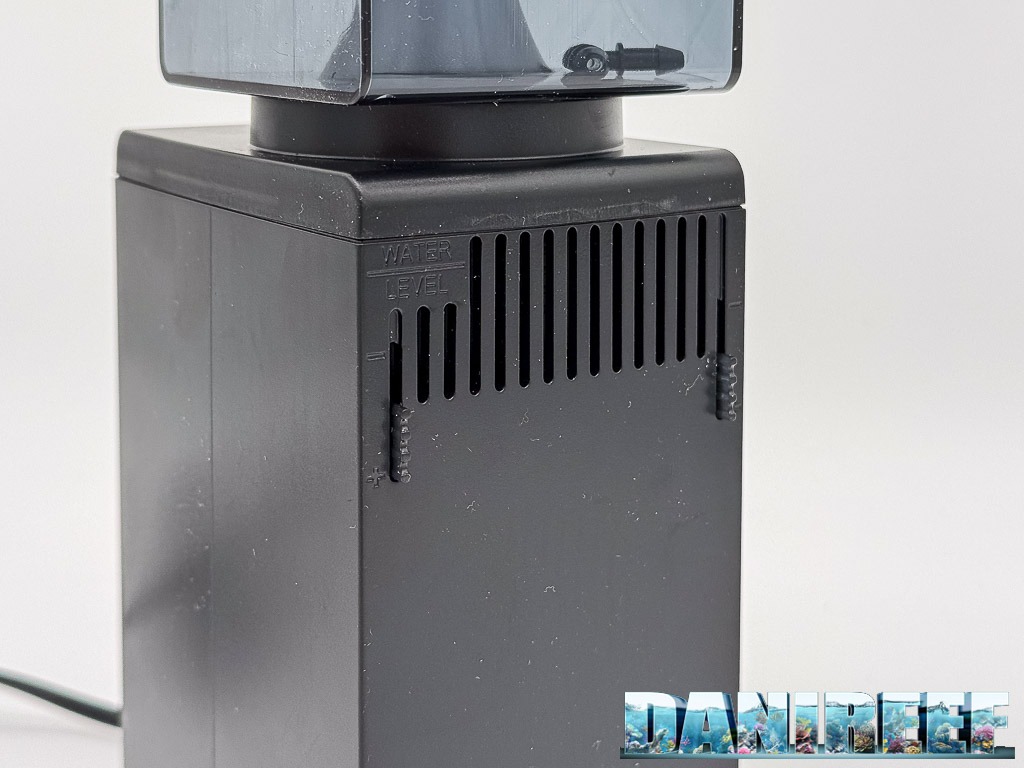
The single pump draws water from outside the skimmer, mixes it with air, and pushes it down into the skimmer’s cone. The bubbles then rise through the body and exit into the collection cup. It’s simple in design and equally simple to use, with the skimmer proving to be very responsive and easy to fine-tune.

Ease of Use
Removing the collection cup is a breeze. It’s gently placed or removed with just one hand. Two things to note:
- The air tube connects to a clip on the lid, so you’ll need to remove it before taking off the cup.
- The cup has a small pin underneath to ensure it’s inserted correctly. Sicce has thought of everything.
Additionally, you can remove the skimmer’s cap, flip it over, and place the cup on top to avoid spills while cleaning.

Sicce even includes a cleaning brush for the skimmer, a classy touch that’s always appreciated.
Pumps: Micra and Syncra
The skimmers use two well-regarded pumps: the Sicce Micra for the Shark Skimmer 150 and the Sicce Syncra for the larger 300. Both feature needle-wheel impellers and are known for their reliability. We tested the Sicce Syncra back in 2012 and found their performance impeccable.
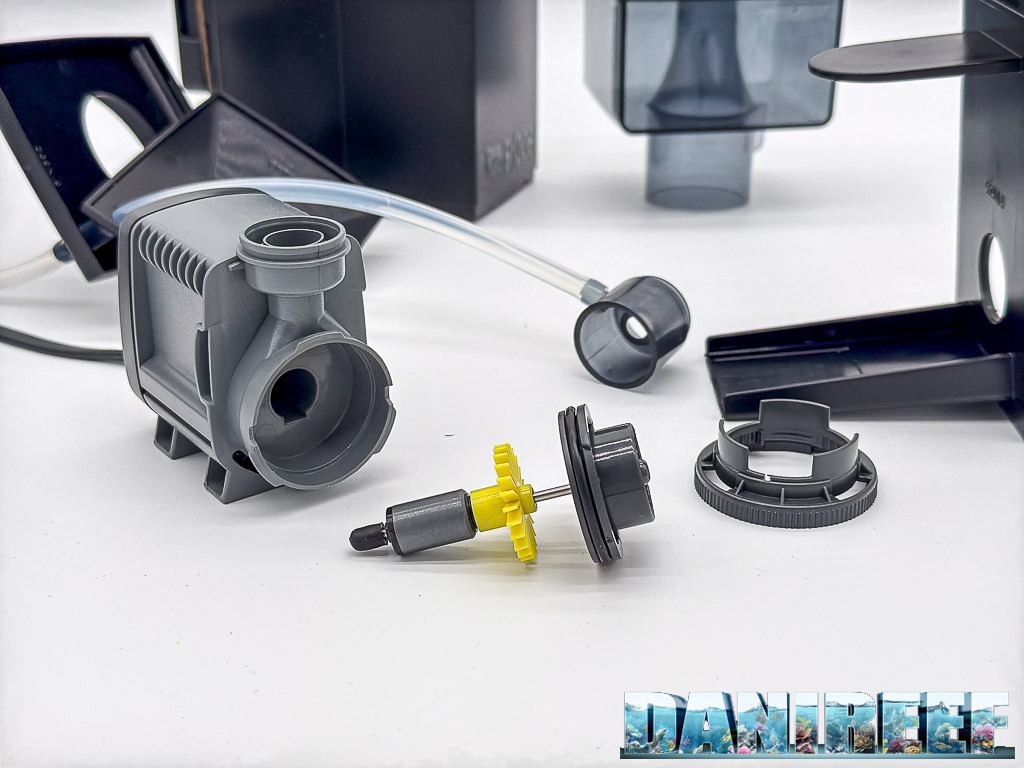
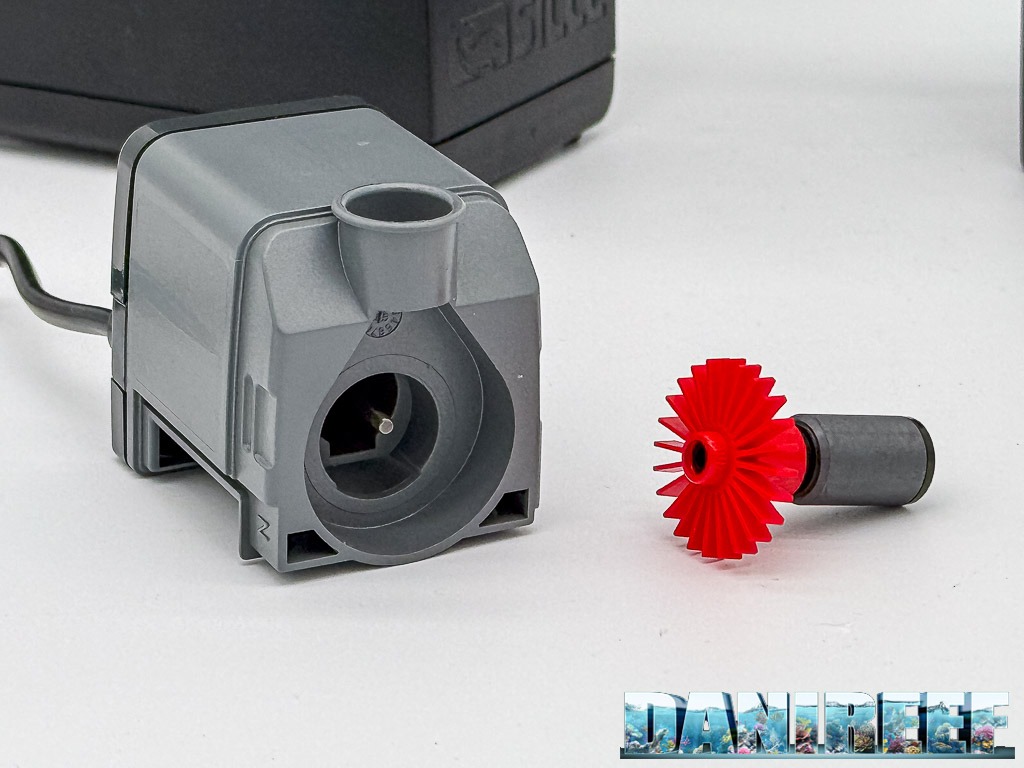
There is no overflow device. It would be safe in a device like this, and if you foam too much, then the foam finds its way out of the cap.
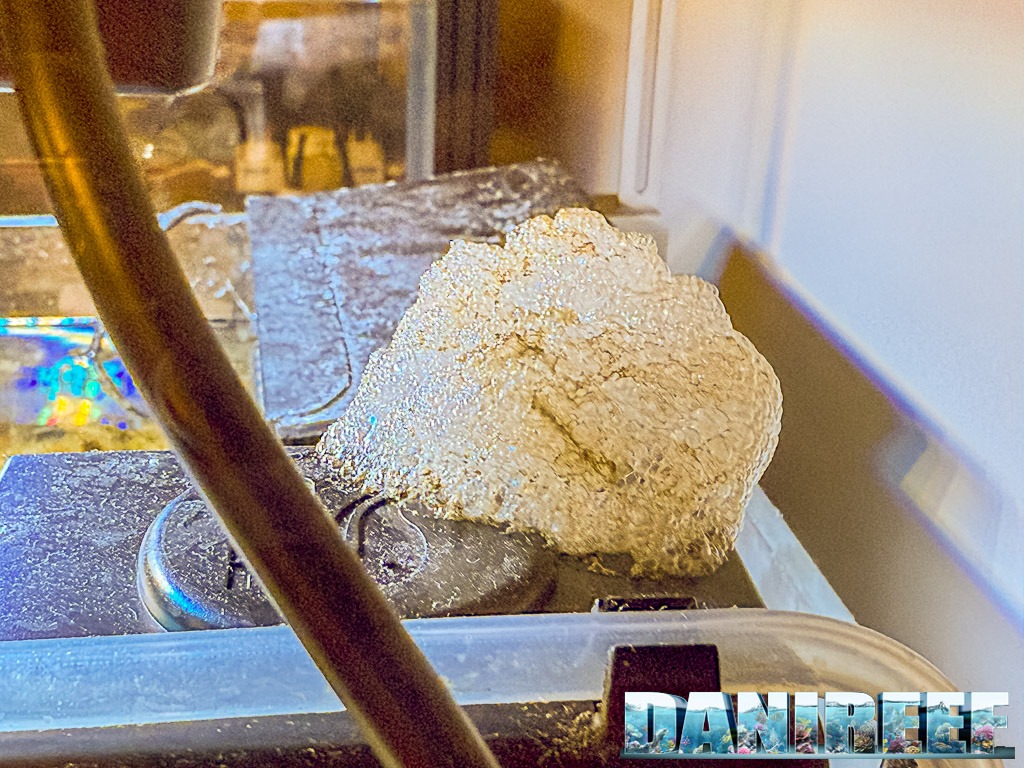
Operation
If I had to choose one adjective for this skimmer, I’d say it’s relentless. It starts foaming immediately, producing impressive foam considering the skimmer’s size and its small pump. Sure, the foam isn’t as refined as what you’d get from skimmers that cost five times as much, but it’s more than sufficient for a small aquarium. The fact that it starts foaming right away is incredible. Check out the video to see for yourself.
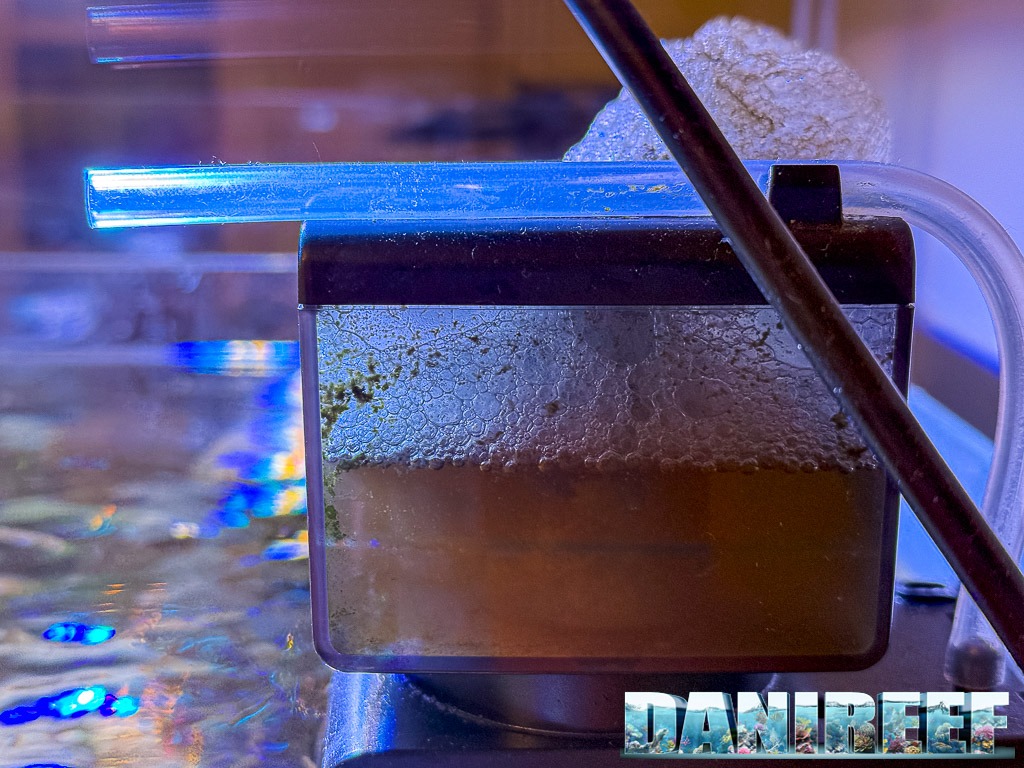
Keep in mind that skimming performance is heavily dependent on salinity—the higher the salinity, the better the skimmer performs. We kept ours at 35 ppt.
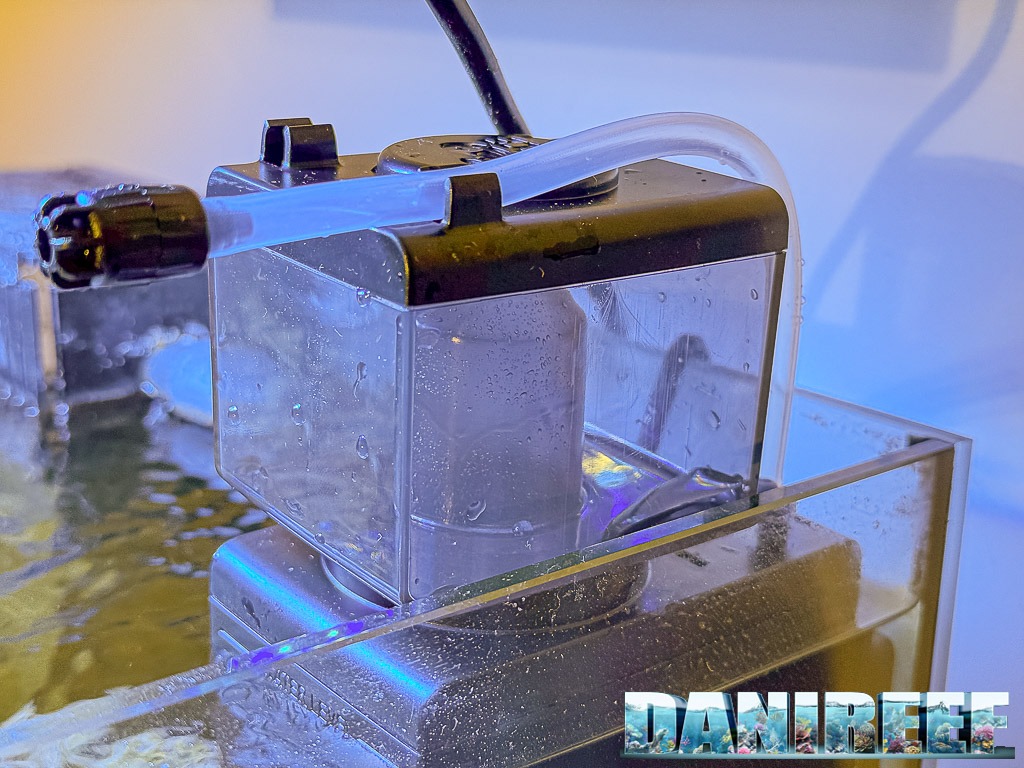
Pay attention to the black pin in the air intake tube. This small pin acts as a restrictor for the incoming air, preventing the skimmer from over-foaming during the first few days of use. Be sure to remove it after a week, or your skimmer won’t perform as it should.
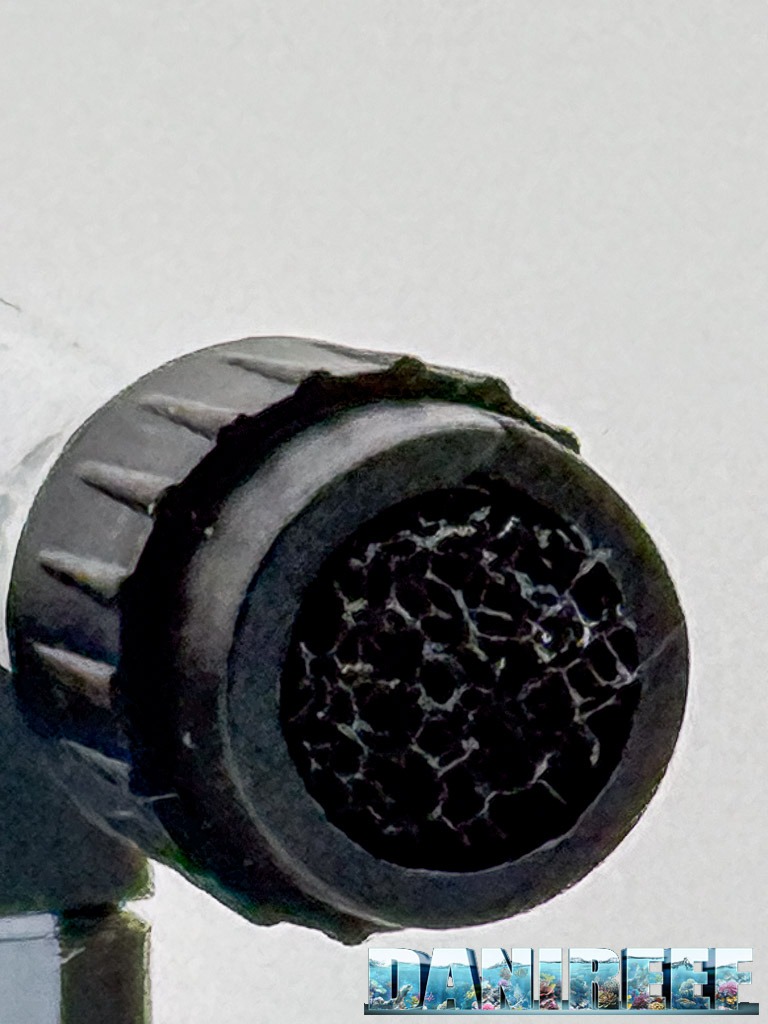
After several weeks of use, we can confidently say we’ve fallen in love with this skimmer. It consistently produces high-quality foam and operates flawlessly. As we mentioned in the video, it’s become our favorite skimmer for aquariums around 100 liters.
Performance and Measurements of the Sicce Shark Skimmer 150
Water Flow
Due to the skimmer’s unique design, we couldn’t measure the exact water flow, which Sicce doesn’t specify. However, we estimate it to be around 150-200 L/h.
Air Flow
To measure the air intake, we used our small Sander flowmeter, following the procedure shown in the video.
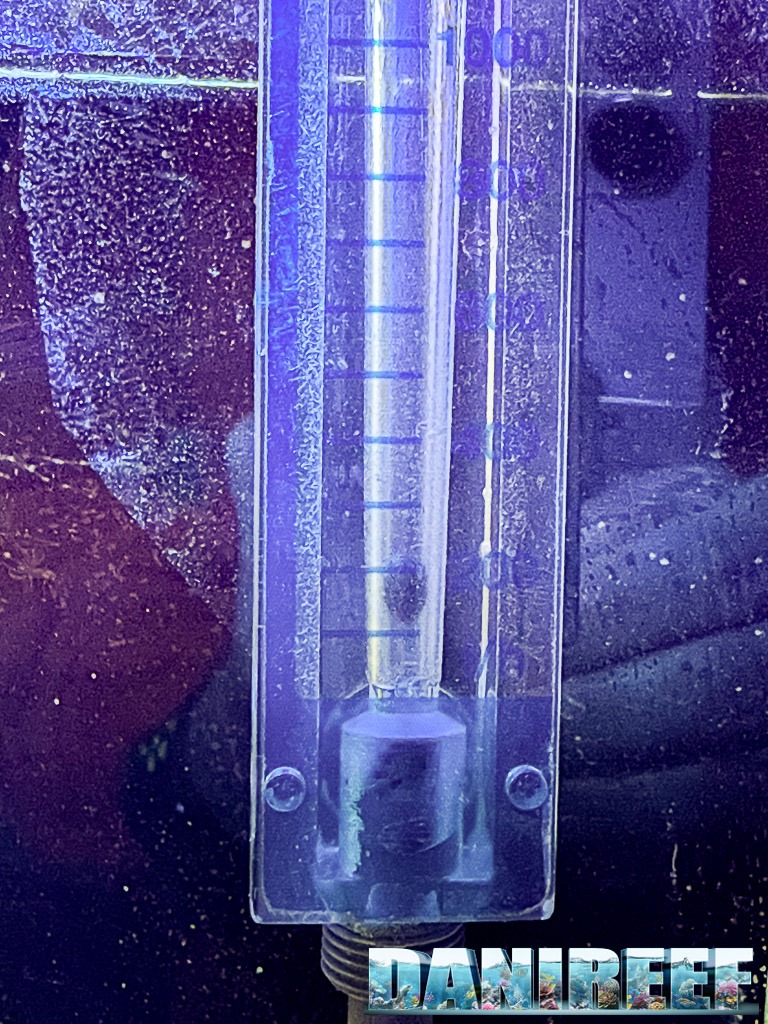
The photo isn’t the easiest to interpret, I’ll admit. But it shows a reading between 100 and 200 L/h. We estimate around 120 L/h, but you need to add 10% to account for losses, bringing the total to approximately 132 L/h. This is very close to the declared 150 L/h. The slight discrepancy could be due to differences in salinity, calibration, or the tools used. Regardless, it’s a respectable value.
Noise level
The skimmer is extremely quiet—so quiet, in fact, that you can’t hear it at all. We didn’t even bother measuring the noise because the only way to confirm it’s running is to check for foam or feel the slight vibrations. Great job by Sicce! That said, it does make a bit of noise during the first few days, but this completely disappears after 2-3 weeks.
It’s also worth noting that noise can come from the cup vibrating against the pump body, so make sure it’s properly seated. In my case, as you can hear (or not hear) in the video, there’s no noise at all.
Operating Costs
The Sicce Shark Skimmer 150 has a declared maximum power consumption of 4 W. As usual, we measured the pump’s consumption while in operation.
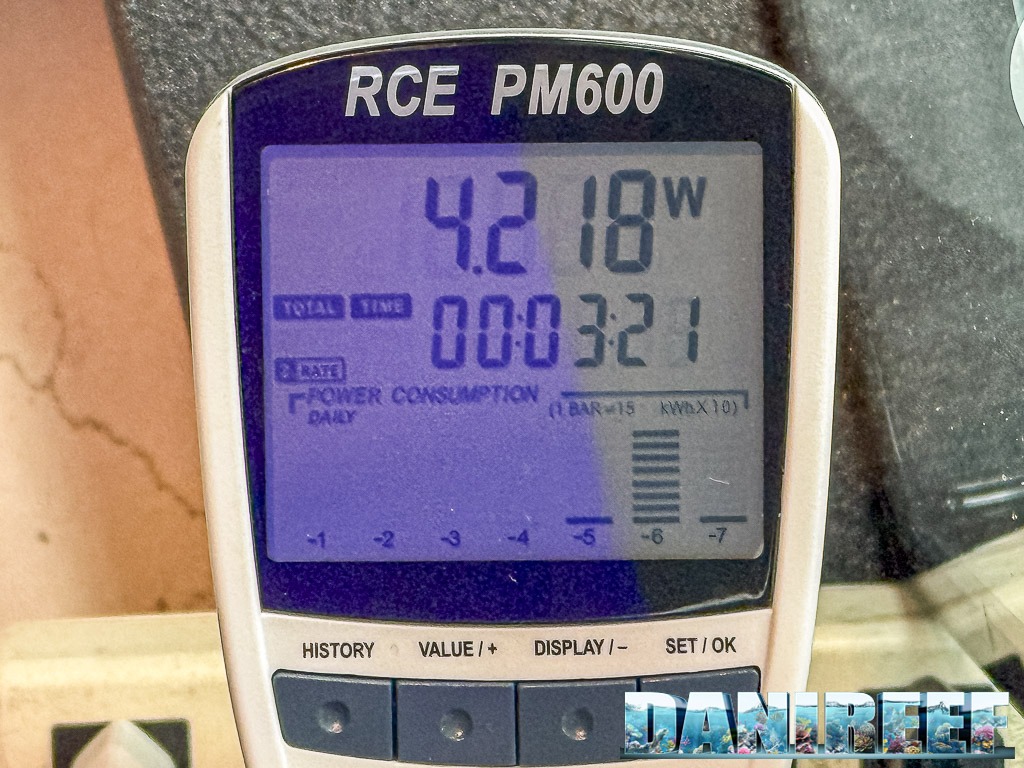
Our measurement was practically identical to the declared value: 4.22 W, which is negligible. This translates to an annual operating cost of about €10, based on an estimated rate of €0.27/kWh. Alternatively, you can calculate it yourself, considering the skimmer consumes around 37 kWh per year, multiplied by your local kWh rate.
Price
The Sicce Shark Skimmer 150 costs €90, while its bigger sibling, the Shark Skimmer 300, costs €130. These are objectively low prices for skimmers that perform this well, and we think most people can afford them, especially the smaller 150.
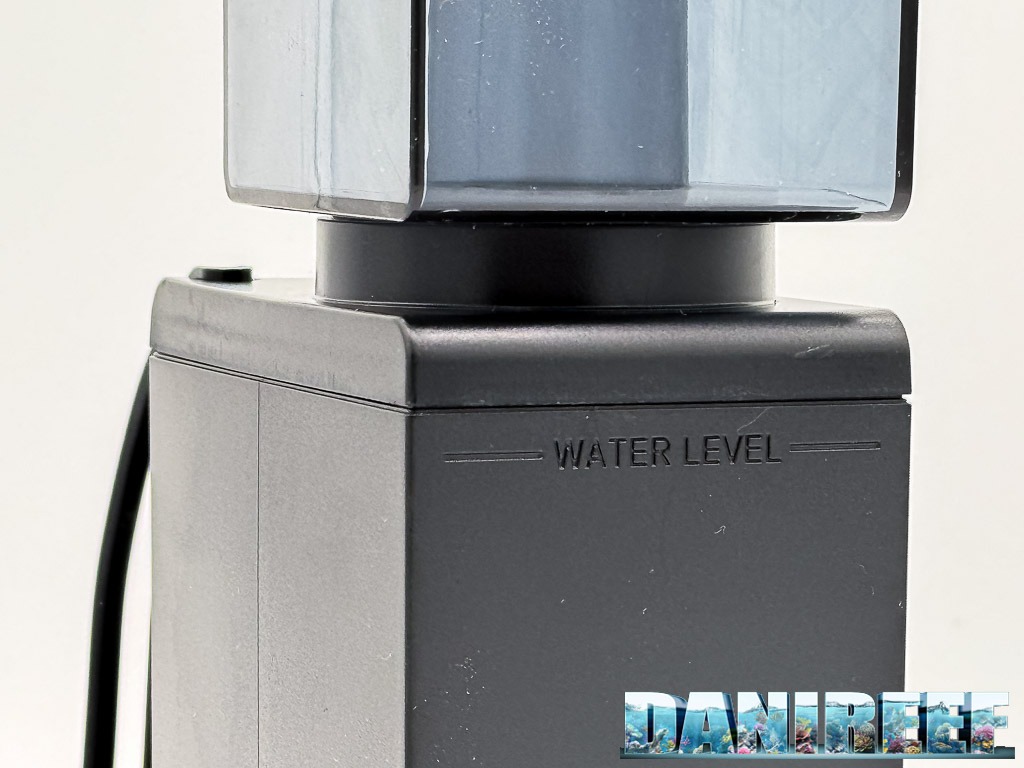
Conclusion
It’s hard to draw conclusions when you’re dealing with a tool this small, this quiet, and this effective. Our 80-liter mixed reef tank was easily managed, and the skimmer performed consistently. While it can also be used in a sump, it loses some efficiency there—not because of the skimmer itself, but because the water loses some of its surface tension as it mixes. Operating costs are low, and the air intake value is excellent.
Finally, during use, it proved to be very reliable and efficient.
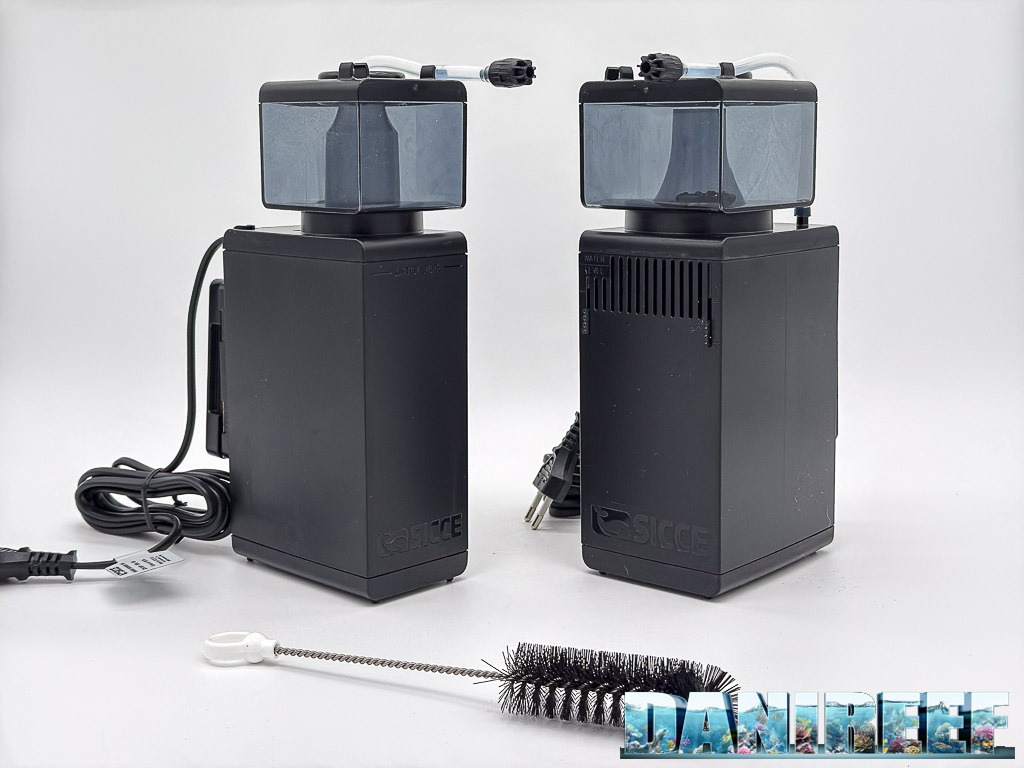
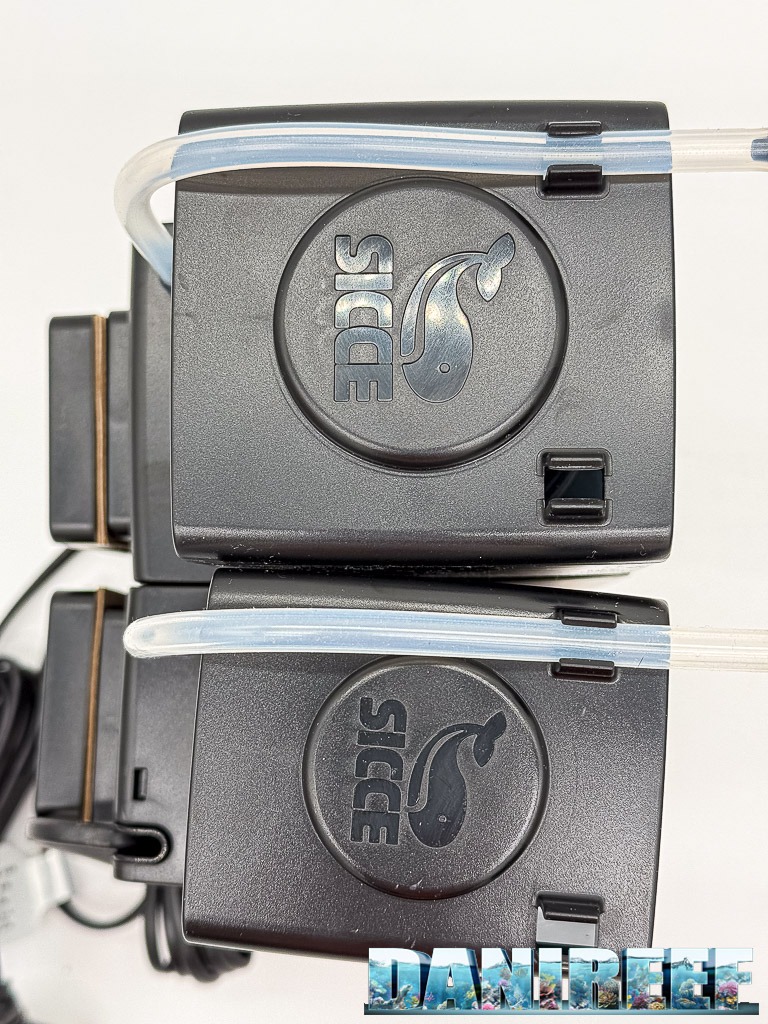
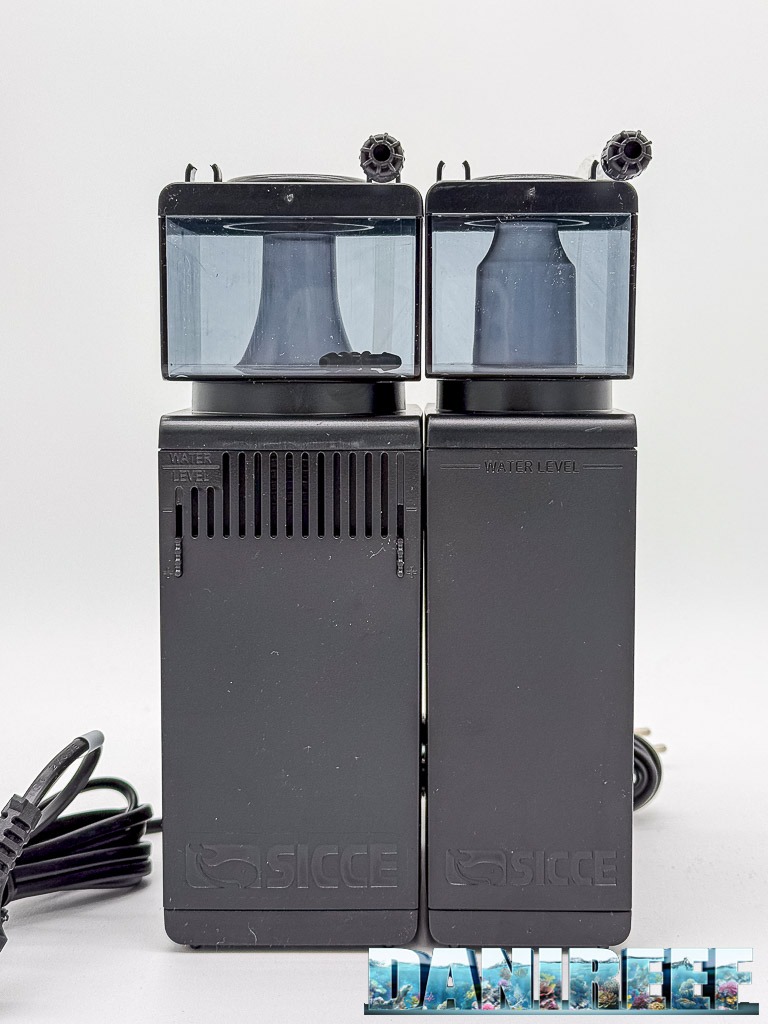
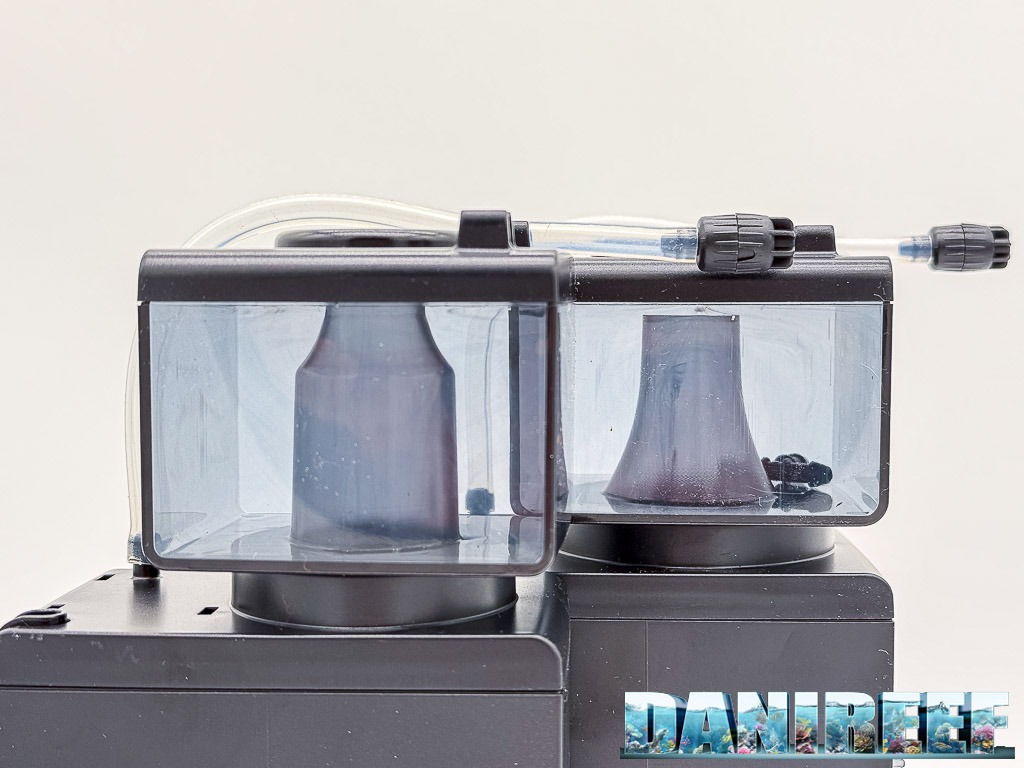
PRO
 Excellent air intake (130 L/h) for its size
Excellent air intake (130 L/h) for its size Extremely quiet
Extremely quiet Easy maintenance
Easy maintenance Low power consumption and affordable price
Low power consumption and affordable price Italian plug included
Italian plug included Drip-free cup design
Drip-free cup design
CONTRO
 Hard to find any flaws in this little powerhouse
Hard to find any flaws in this little powerhouse

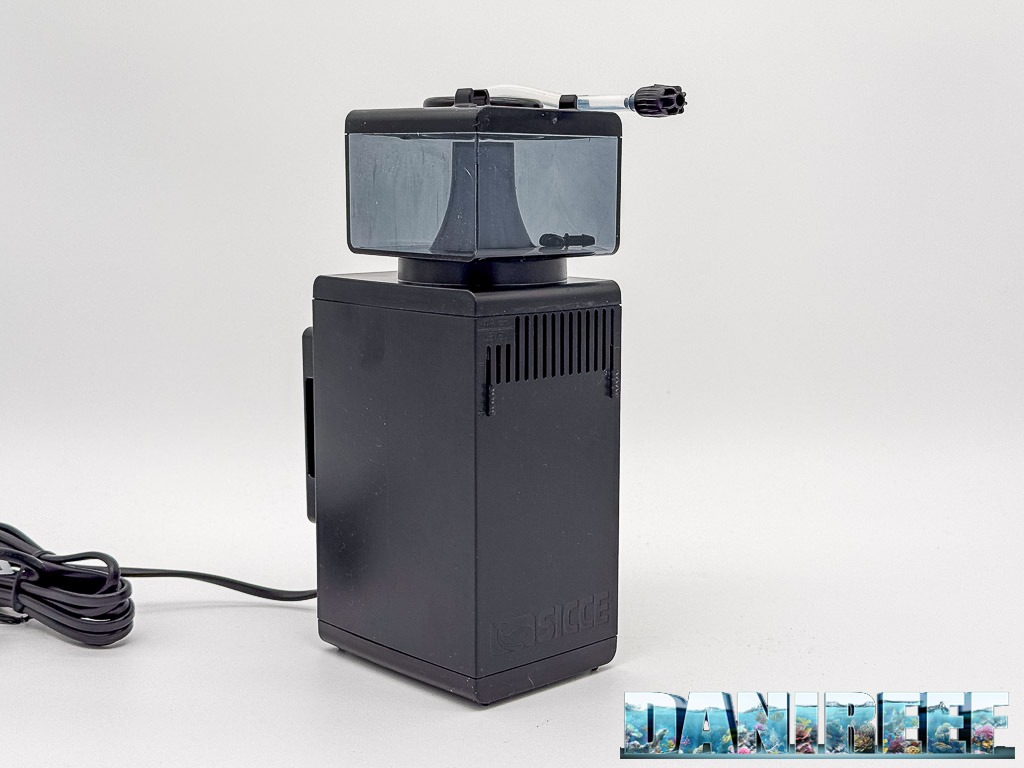
Disclaimer: We thank Sicce for providing the skimmer for review purposes




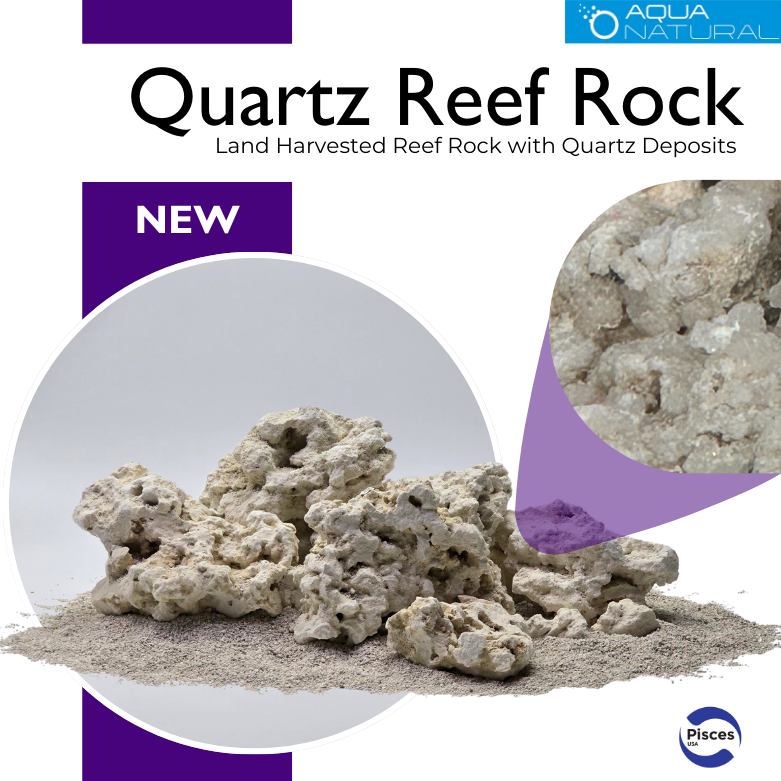



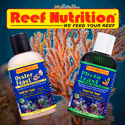

0 Comments